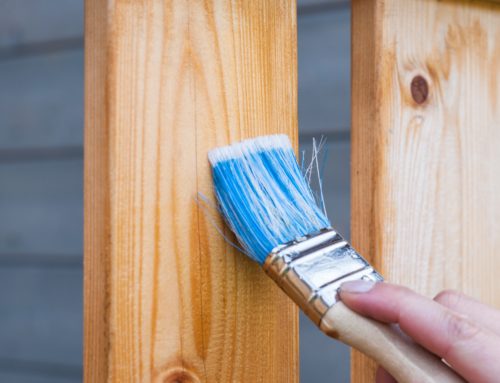- Check for loose or leaky gutters as they can lead to drainage issues that can allow water into your basement or crawl space. Downspouts should be clear of debris and drain away from the foundation.
- The grade around your home should be sloped away from the foundation to prevent water from pooling up and entering the home. Use compact soil to increase the grade so that water flows away from the foundation.
- Check any wood trim surrounding windows, doors, railings, or decks for rot. This can easily be done by using a screwdriver to probe the material. You’ll want to repair any trouble areas before the spring rains begin.
- Examine the roof’s shingles and flashing around skylights, vents, and chimney’s from the ground. Missing or damaged shingles should be replaced.
- The exterior of the chimney should be examined for signs of damage. Have the flue cleaned of debris from any winter fires you may have had in your fireplace.
 Concrete slabs should be inspected for signs of movement or cracks. All exterior concrete should drain away from the home’s foundation. Fill cracks with a concrete crack filler. When weather permits, power-wash and then seal the concrete to increase longevity.
Concrete slabs should be inspected for signs of movement or cracks. All exterior concrete should drain away from the home’s foundation. Fill cracks with a concrete crack filler. When weather permits, power-wash and then seal the concrete to increase longevity.- Check outside hose faucets for freeze damage. Turn the water on and place your thumb or finger over the opening. If you can stop the flow of water, it is likely the pipe inside the home is damaged and will need to be replaced. While you’re at it, check the garden hose for dry rot.
- Have a qualified heating and cooling contractor clean and service the outside unit of the air conditioning system. Clean coils operate more efficiently, and an annual service call will keep the system working at peak performance levels. Change interior filters on a regular basis
Request More Information
Fill out the form below to receive more information! Our team will reach out to you shortly.











